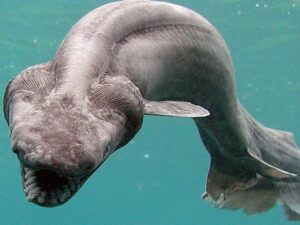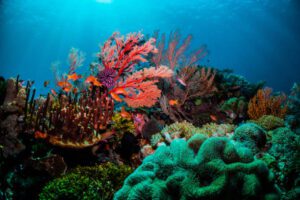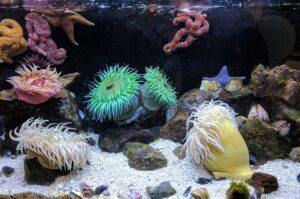Oacian are animals that can move both on land and in water. It is a unique species that’s behavior and patterns are worth observing. In this blog post, we will discuss the characters and observations about this amazing species in detail. As the name tells us that they are related to oceans. They are good to look at. Their appearance is beautiful. But their quick adaptation to the environment makes them unique.
Types Of Oacian
These organisms are common in different regions and unique in their characteristics. Their nature is calm and patient. They show the capability of surviving in problematic conditions. When they come out of the ocean, they can divide their tail into two halves to walk on the land. Their body color has a good impact on their surroundings.
Their Body Type
They usually prefer wet conditions. When they stay out of the watery regions, their skin may get dry, and they will not be able to tolerate this. Some of them may possess scales in specific parts of their body.
The Oacian And Their Mysterious Ocean Creature

Oceans are home to some of the most diverse and unique creatures on earth. But deep beneath the waves lie many that are completely invisible from land.
Roman Fedortsov, a fisherman from Ukraine, has gone to great lengths to capture some of these remarkable sea animals. His recent distorted captures have left Twitter users in complete astonishment!
1. The Giant Squid
The giant squid is a legendary sea monster that has been around for centuries. With a head like a bishop’s miter and eyes as big as dinner plates, it has been depicted in literature, films, and television shows as an unsettling monster capable of eating sperm whales.
It has eight arms with 2-inch-wide toothed suckers, a sharp beak in the center of each arm and an organ known as a radula, or tongue-like organ. The radula cuts and grinds its prey into smaller pieces before attaching it to the giant squid’s arm.
2. The Bioluminescent Sea Cucumber
Sea cucumbers are marine creatures living beneath the ocean surface. They resemble large caterpillars or worms and can be found around the world in various locations.
Sea cucumbers come in a range of vibrant colors and patterns. Purple varieties tend to have purple stripes while red patterns feature on their tentacles. On average, these creatures measure 7 inches (18 centimeters) long with ten tentacles.
3. The Giant Octopus
This enormous cephalopod is distinguished by its unusual anatomy. It has long arms that extend into suction cups and eight tentacles connected by membranes.
These limbs can support 100 grams of weight and allow it to move around freely. Furthermore, they breathe through gills.
Furthermore, it has three hearts. One drives blue blood throughout the body while the other two push it through gills.
Octopuses are masterminds of camouflage and mimicry, employing various tricks to avoid predators. These may include moving rocks, imitating a predator’s movements, or even using sticks or stinging tentacles to attack their prey.
4. The Longhorn Cow Fish
Longhorn cows are one of America’s most beloved and iconic livestock species. Though their numbers declined during the 1920s, they have since been revived in demand as both beef cattle and for cross breeding with other cattle to improve stock performance.
Texas and Montana’s harsh climates often result in the deaths of other cattle due to their tough constitutions and ability to thrive off weeds, grasses and plants. This toughness allows them to remain fertile and healthy even during times of drought or disease.
5. The Abyssal Sea Slug
Sea slugs are fascinating invertebrate creatures that look somewhat similar to land slugs but boast more vibrant colorations and beauty. Like their terrestrial cousins, these marine slugs belong to the Mollusca phylum and class Gastropoda suborder.
Sea slugs often sport brightly-colored organs on their back called cerata (horns in Greek). These cerata serve to protect them from predators.
The gem sea slug, Phyllodesmium longicirrum, is an interesting creature. It recycles algal cells from soft corals for sustenance and growth.
6. The Deep Sea Sponge
A deep sea sponge is an uncommon animal in the animal kingdom. It belongs to the phylum Porifera, meaning “many pores.”
Sponge bodies are composed of loosely attached individual cells that form a gelatinous mass interspersed between two main layers. The outer epidermis is covered by minute pores that absorb water and wastes, which the sponge filters before expelling from an opening known as an osculum (pore).
Ocean sponges make their living by filtering bacteria, diatoms and other microscopic organisms from surrounding seawater. Their central cavity with umbrella-like spines prevents them from sinking too deeply into ooze and allows them to catch prey.
7. The Glowing Octopus
The glowing octopus is one of the most mysterious creatures ever observed. It was first spotted in the waters off Hawaii, and its sighting has mystified ocean scientists who study marine animals.
Octopuses are renowned for their camouflaging abilities, using chromatophores (colored cells) to alter color. Chromatophores are like small water balloons filled with vibrant pigment that expand and contract, altering the octopus’ skin color and pattern.
When threatened, the octopus releases ink into a dark cloud to conceal its escape and deter predators from attacking.
Effect of Coloration
There are specific reasons why the coloration effects are so attractive for Oacian. They can attract their mates, and besides, they fool a predator. They can hide or adapt themselves according to the environment and specific reasons. They possess a variety of colors like Blue, Red, Yellow, and Oceanic Green. They have dots and thin marks that make them look more bright.

Meal or Diet Plan
Oacians’ food must contain Calcium, Vitamins, and Minerals. They have a variety of diet ranges. As their size varies, their meal gets changed. Their food charts include small reptiles, fishes, and aquatic plants to shrimps, worms, caterpillars, and insects like crickets, grasshoppers, etc. So, they can vary from carnivores to herbivores.
Behavior Of Oacian

- They seem to be severe and steadfast.
- They like to live in cool and damp areas.
- To avoid dehydration, they always look for moist seaways and regions.
- They prefer a space of 100 feet of deep oceanic water.
- They have their realm termed the Cryth Pool.
Benefits OF Oacian
- Many people and ecosystems benefit from Oaxaca’s flora and fauna. Oacians are a sensitive indicator species for water quality problems.
- Predators also rely on oacians as a food source. Now, this contributes to maintaining population stability. Additionally, they contribute to a healthy equilibrium between aquatic and terrestrial ecosystems.
- Oacian give us an wonderful window into how animals have adapted to survive in various settings. Observing their behavior lets us learn a lot about how organisms adapt to different environments.
Authority Of Oacian Species
These animals are very faithful. Oacian know that their queen has firm control over the entire group. Their most important influential word is ‘law.’ They follow and respect their queen. They are always obsessed with their survival and tend to ignore the importance of other species. If, somehow, one animal tries to enter a space with restrictions, it will be rejected by the queen. It can produce a severe problem for its survival.
How Does Oacian Communicate?
They use low-frequency speech as the medium of communication. They can easily detect different ranges of sound within short time gaps. The distance of detection varies between 100 to 200 ms. Their first note is essential in detecting sound lengths as it’s higher than other notes.
Special Features
- The mals have pad on the sides of their inner fingers; with its help, they can hold their mates. The girls lay many coated eggs.
- These species can jump more than one meter in a single attempt. It’s all because of their macho hind limbs.
- They have an endoskeleton which is made of cartilage.
- Like amphibians, they can breathe through the skin.
How Long Do They Survive?
Survival varies from species to species. Life stage depends on factors like the surrounding environment, weather conditions, and moral decisions. The years of survival go between 5 to 15 years. They show different habits in different climatic conditions, affecting the maintenance of BMR in their bodies. They can also stay well in both warm or cool weather. The defense mechanism of the body helps them fight against their enemies.
Why Are Oceanographers Essential To Find The Facts Related To Oacians?

Oceanography is a subject related to studying the Ocean and its life, plants, and other facts. The people who work on these topics are oceanographers. Every mystery under the sea can stay unnoticed if they don’t work hard.
Climate Change’s Impact On Oacian
The Oacian way of life may shift as a result of climate change in one of three ways:
- The species may be pushed to relocate to more favorable regions.
- It may be forced to adapt to its new environment.
- It may become extinct.
Yet, the specific biological and environmental elements that contribute to these divergent reactions remain largely unknown. Here, we investigated how ecological and biogeographic aspects influence frogs’ responses to climate change. To better understand the potential effects of climate change on amphibian distribution, we conducted a comprehensive assessment of the literature.
Our findings indicate that species at elevations exceeding 515 m will lose a significant portion of their current climate-suitable range. We also discovered that the quantity of land that can be used to accommodate climatic change increases in tandem with the degree of isothermality. Another significant finding was that more climate-friendly places must be sacrificed as the size of the baseline area increases.
Small-scale Oacian communities, on the other hand, tend to remain where they are because of the favorable environment. Furthermore, our findings indicate that Oacians in arid regions are expanding their settlements to encompass broader geographic areas as a result of global warming. It is because these ecosystems typically experience harsh seasonal climates, with distinct periods of drought and rain.
Final Thoughts
So we have come to the end of our writing. So, the species covered here is definitely “a type of amphibian” with some unique attributes. They are usually seen near or in oceanic regions. Lastly, distinguish their name from the ocean. Go through the descriptions well. The topic may draw your attention to know more. I have tried to cover all the known facts through this. Please share your insights through comments so I can work on the drawbacks.
FAQs
What kinds of animals did the Oacians have?
They are the kind of animals that like to live on cool and wet surfaces. They also want to live where their skin and bodies are easily touched. Some animals have scales on some parts of their bodies.
Why Is The Species Less Considered?
Though some groups are actively researching the species, it is getting less attention because their number stays the same. It can be for different reasons like seawater pollution, competition with other species, less food availability, and other things. So, it’s high time to think in favor of our natural animals.
What is going on around them?
Oacian live in the wild and need at least 100 feet of uncontrolled water in the sea or Ocean. Most people call the city that is their capital “Cryth-pool.” And most of them are spread out over a large area on the ocean floor and under the water. Even though they have the same parts, they are at different depths in the seas and oceans.
